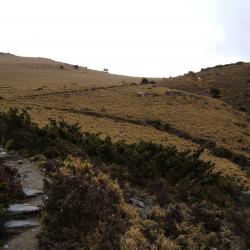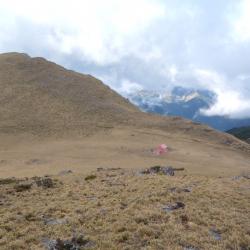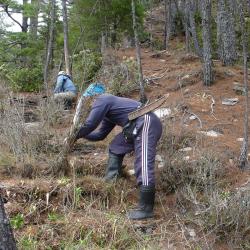The far ridgeline in the picture is Dashuiku, which is located in south of Mount Dashuiku, south of Mount Jianshan, and north of Mount Jianshan and North-faced Mountain, on the main ridge of the Central Mountain Range.
Nearby is a bamboo grassland with a good outlook and a natural pond. The Qing soldiers were once stationed here in the Qing period and named the camp Shuiku. Today, the pottery fragments left by the life of the people at that time can be found on site. Furthermore, this area was the prefectural boundary for Taichung and Hualien during the Japanese occupation period, and a checkpoint was set up. Currently, there are still traces of the stacked stone foundation. There are also semi-circular iron pipes on site, which were left from the Japanese occupation period when the water source of the Dashuiku was drawn from the pond in the north.


